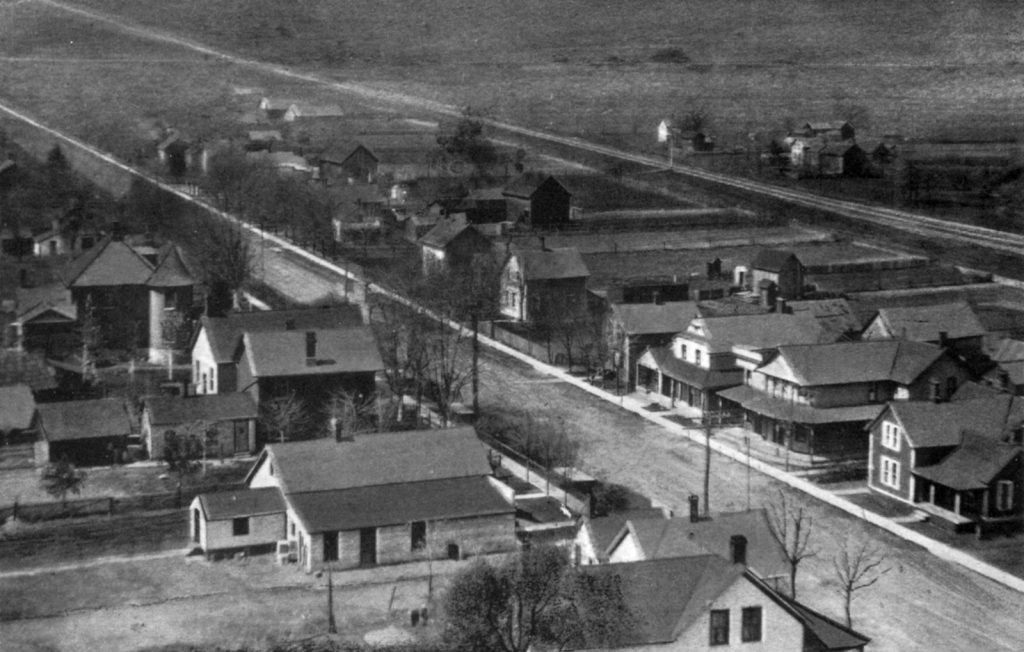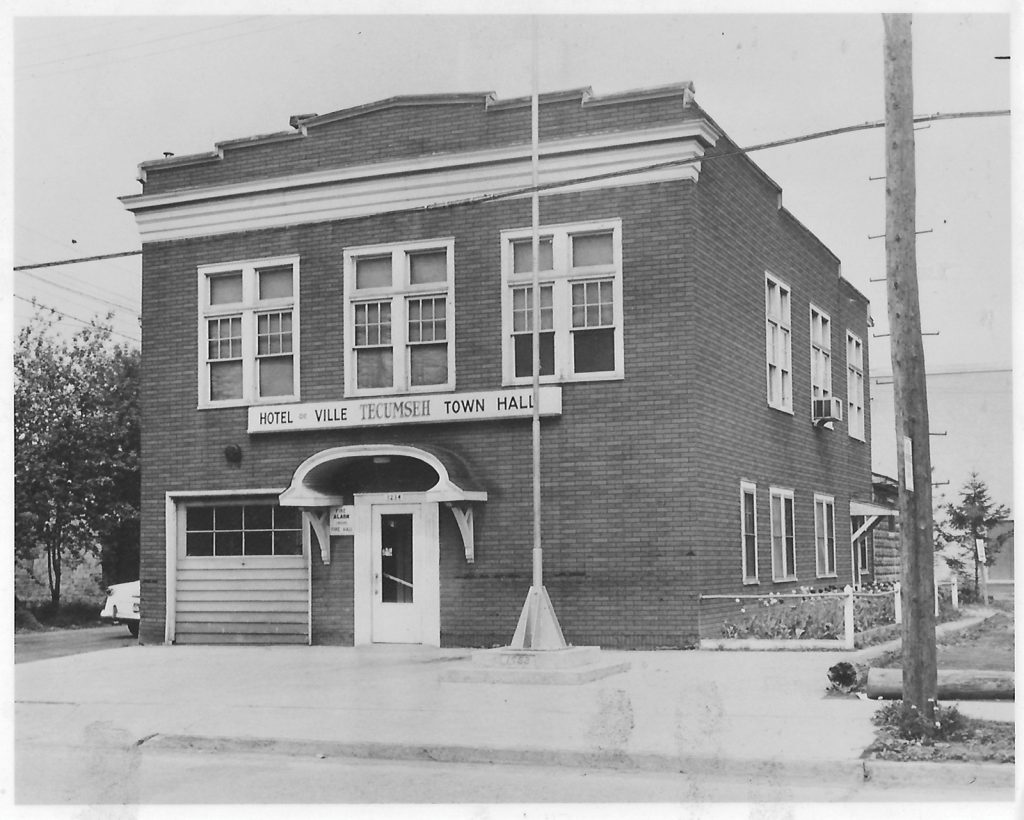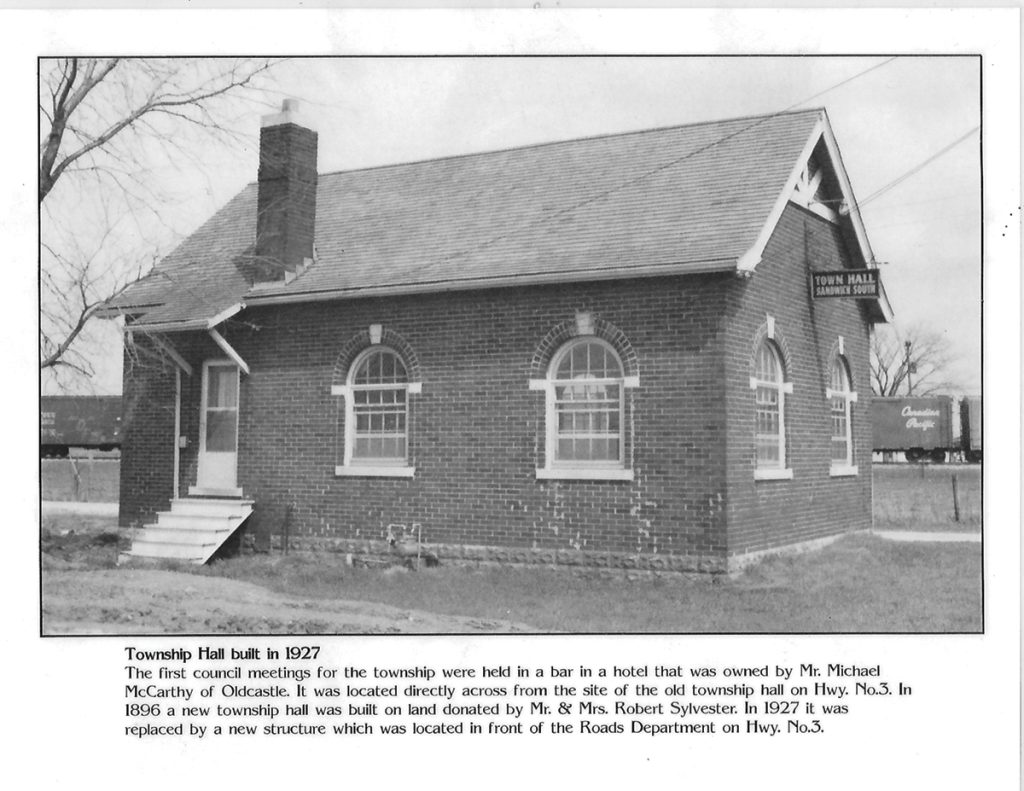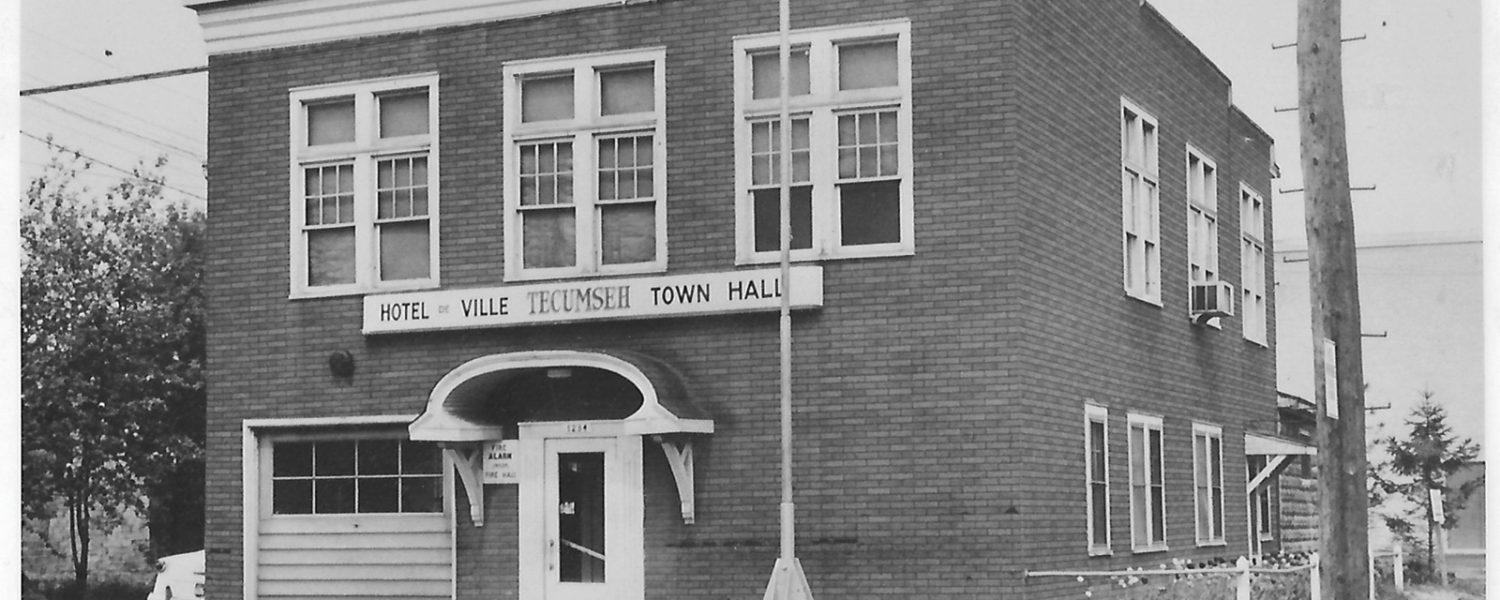The Winding Road The Town of Tecumseh
Traveled to Reach Its First Centennial
Story By Matthew St. Amand
Photography Courtesy Town of Tecumseh Archives
There is a phenomenon in the Town of Tecumseh that is reasonably new: rush hour.
In the crush of traffic at Manning Road and the E.C. Row expressway, at certain times of day, it’s nearly impossible to imagine a time that was pre-automobile, pre-electricity, back when the area was nothing but a sea of trees and a network of waterways. Before the Detroit River was an international border. Stopping and considering the growth the town has experienced in the past two decades, it’s a dizzying mental exercise to consider that European settlers have lived in the area since the late 1700s. Indigenous people have been here much longer than that.
On Canada Day Weekend, the Town of Tecumseh will celebrate its first centennial as an incorporated town.
It all began with Bill No. 45 “An Act to Incorporate the Town of Tecumseh” in 1921, which read in part: “Whereas Malcolm Clapp, of the Township of Sandwich East, in the County of Essex, Farmer and others have by their petition represented that a considerable portion of the lands here-inafter described as suitable for the purpose of summer residences and are becoming greatly in demand…”
Residences… becoming greatly in demand… As Shakespeare once wrote: “What’s past is prologue.”

Although the town was named after Tecumseh, the great warrior of the Shawnee nation, the name came to the area long before the town founders set forth with Bill No. 45.
“The Great Western Railroad came to this area in the mid-1850s,” says Marilyn Prior, President of the Tecumseh Area Historical Society. “They built a train station and named the station ‘Tecumseh,’ after the great warrior. People traveling to this area said, ‘I’m going to Tecumseh,’ meaning, the train station. It’s my opinion that that’s how the area came to be known by that name.”
History, however, is fluid, and there are few distinct lines of demarcation. When the first European settlers came to the area, they went to Land Registry offices, such as the one at Fort Pontchartrain du Détroit, which existed between 1701 and 1796. There, they were allotted a parcel of land and provided with blue prints for building a log cabin.
Still, life was unimaginably difficult in that time and place. If it weren’t for the indigenous people of the region advising the settlers on which plants were good to eat, which animal pelts offered the most warmth in winter and countless other ways to survive, very few would have made it through.
One of those early settlers was Charles Lesperance, after whose family Lesperance Road was named.
“Charles Lesperance built his log cabin in 1799,” Marilyn explains. “In 1800, he married Marie Pitre and they raised their family on that parcel of land.”

Nearly two centuries later, as Tecumseh resident, Brian Campeau, renovated his home, he came upon what appeared to be materials from a very old log cabin that were incorporated into the structure of the house. Brian had the presence of mind to retain these old pieces of timber and to number them so that they could be reassembled. These were from the Lesperance log cabin.
“We have the land registry deed from that time identifying that as the Lesperance log cabin,” Marilyn continues. “Three of the four walls were found. The log cabin was reassembled at the Tecumseh Area Historical Society, where visitors can tour it.”
This is sometimes how history is uncovered—accidentally.
“Much of history is not written down as it happens,” Marilyn says. “It begins as word-of-mouth and is passed from person to person. We learned our history by going to the Post Office records, the Land Registry records, the Great Western Railroad’s records, among other sources.”
Two factors that helped open the area for settlement were the creation of Tecumseh Road in 1838 and the establishment of the Great Western Railway nearly 20 years later. It wasn’t long before the town became an important railway depot and stopover for travellers, according to Wikipedia. The main industries were agriculture. Some of the first businesses included Arthur Cecile’s grocery store, Joseph Breault’s cheese factory on Banwell Road, John Dugell’s bakery, as well as a few butcher shops, the canning factory, and the Carling Brewery.
Before the Town of Tecumseh formally incorporated in 1921, it was known as East Sandwich. By the time of its incorporation, the town’s population was 978 souls. Bill No. 45 installed Col. Paul Poisson as the first mayor of Tecumseh until the first election, which was held in 1925.
From Bill No. 45: “3.—(1) The council of the town shall consist of a mayor, reeve and five councillors. Paul Poisson shall be the first mayor. Malcolm Clapp shall be the first reeve and Adhelme Jacque, A. Thomas LeBoeuf, Dennis St. Louis, Everiste Prince and George Cannelle, the first councillors.”
Col. Poisson served in World War I as a medic. Before becoming Tecumseh’s first mayor, he was the town doctor. The medical equipment from his office is on display at the Tecumseh Area Historical Society.
According to the Town of Tecumseh website: In 1922, a fire chief was appointed although no fire department was in existence. Fires were fought by town volunteers. The Ontario Provincial Police began policing the Town in 1948 with two constables.
One Tecumseh resident, Bernadette, who spent her childhood and young adulthood in the area from the mid-1940s into the early 1960s recalls: “At that time, Tecumseh was a little village where everybody knew everybody. You had a difficult time getting into trouble. If someone saw you getting into something, they came over and said: ‘Does your father know you’re doing this?’ Everybody was everybody’s parent and everybody was everybody’s kid.”
She remembers the Town of Tecumseh of that time as a small, close knit community.

“It was a good, safe place with families,” she says. “There were just a few stores, just basic necessities. There were two hardware stores: Robinette and Drouillard. Mrs. Robinette had dry goods next to the hardware store.”
As a child, Bernadette attended St. Antoine school, which was located behind Ste. Anne’s Church. She was educated by the Ursuline sisters, who resided in a convent located directly behind the church.
“Mother St. Mark taught grade one,” Bernadette continues, “who was barely taller than the children in her class. They loved her. She was one of them.”
Across Lesperance Road from the church was the movie theatre.
“The guys in high school were the ushers,” Bernadette recalls, “and on Saturdays they were the ones yelling at you: ‘Sit down! Be quiet! Don’t spill that!’ As teenagers, the girls all had crushes on them. No matter what movie played—a western, musical or cartoon—the theatre was packed.”
There were two diners in the town at that time: Michigan Lunch and Tasty Lunch. Michigan Lunch stood on the corner of Tecumseh and Lesperance Road. Like something out of a James Dean movie it had a line of booths along one side and a lunch counter with stools along the other. Michigan Lunch catered to an “older” crowd: people in their 30s and 40s, as well as families. On Fridays, the diner did a bustling trade with their fish and chips, 50 cents an order with cars lined up down the street picking up orders.
“Tasty Lunch is where the teenagers hung out after school,” Bernadette remembers. “It was like the diner in the show Happy Days—ringed with booths that had jukeboxes and a few tables in the middle.”
The residents of that time could not fathom the future that would on day arrive in the town.
Pondering how Tecumseh has grown over the years, Marilyn says: “I grew up here. Tecumseh has always been a little town to me.”
That little town is now 100 years old. To learn more about its history, visit the Tecumseh Area Historical Society at the original location of the Tecumseh train station at 12350 Tecumseh Road East, just east of Lesperance Road.
For more information about Tecumseh’s centennial celebrations visit the town’s website at tecumseh.ca.




Add comment